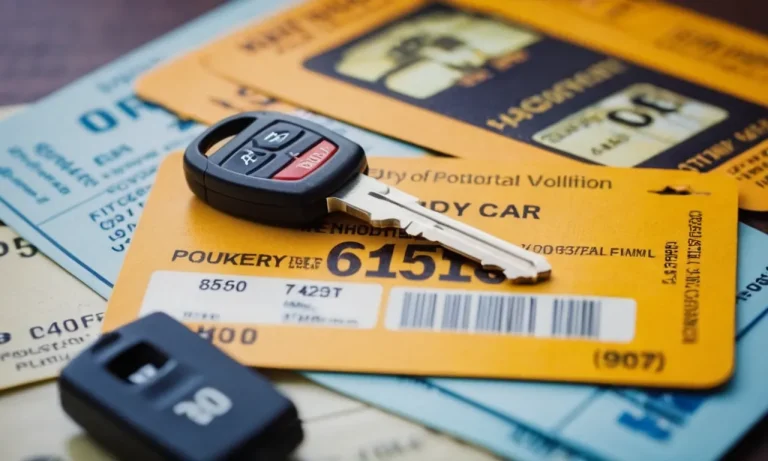Buses are a crucial form of public transportation in cities and towns across the world. If you’ve ever found yourself running after a bus as it pulls away from the curb, you may have wondered: just how fast do these things go?
In this comprehensive guide, we’ll take an in-depth look at bus speed regulations to answer the question once and for all.
If you’re short on time, here’s a quick answer to your question: the maximum speed for buses in the United States is typically between 55 and 65 miles per hour. However, bus speed limits can vary based on the type of bus, road conditions, and local regulations.
Bus Speed Limits by Vehicle Type
School Buses
School buses are designed to transport children to and from school safely. As such, they are subject to specific speed limits to ensure the safety of their young passengers. In most states, school buses have a maximum speed limit of 55 miles per hour (88 kilometers per hour) on highways.
However, some states may have slightly lower speed limits for school buses, typically around 45-50 miles per hour (72-80 kilometers per hour).
These speed limits are in place to account for the size and weight of school buses, as well as the need to make frequent stops to pick up and drop off students.
Intercity Buses
Intercity buses, also known as coach or long-distance buses, are designed for travel between cities or towns. These buses typically have higher speed limits compared to school buses.
In the United States, intercity buses are subject to the same speed limits as other passenger vehicles on highways, which can range from 55 to 85 miles per hour (88 to 137 kilometers per hour) depending on the state and road conditions.
However, it’s important to note that individual bus companies may have their own policies on maximum speeds to ensure passenger safety and fuel efficiency.
Public Transit Buses
Public transit buses, commonly used for urban transportation, have specific speed limits determined by local authorities. These speed limits are typically lower than those for intercity buses, as they need to navigate through city streets and deal with traffic congestion.
In many urban areas, the speed limits for public transit buses range from 25 to 35 miles per hour (40 to 56 kilometers per hour). These lower speed limits help ensure the safety of both passengers and pedestrians.
Double-Decker Buses
Double-decker buses, known for their iconic design and ability to carry a larger number of passengers, are subject to similar speed limits as other buses.
The maximum speed limit for double-decker buses depends on the type of road they are traveling on and the specific regulations of the region.
In general, double-decker buses are designed for city driving and are not intended for high-speed travel on highways.
As such, their speed limits are typically similar to those of public transit buses, ranging from 25 to 35 miles per hour (40 to 56 kilometers per hour) in urban areas.
It’s important to note that speed limits for buses can vary by country, state, and even city. It’s always a good idea to familiarize yourself with the local traffic laws and regulations when traveling in a foreign area.
For more specific information on bus speed limits in your area, you can visit the website of your local Department of Transportation or relevant transportation authority.
Factors That Impact Bus Speed
When it comes to determining how fast a bus can go, several factors come into play. These factors can vary depending on various elements such as speed limits, road conditions, the number of stops, and driver behavior.
Understanding these factors is crucial for both bus operators and passengers alike, as it can have a significant impact on travel time and overall efficiency.
Speed Limits
One of the primary factors that dictate how fast a bus can go is the speed limit set by local authorities. Speed limits are established to ensure safety on the roads and may vary depending on the type of road and its location.
In urban areas, where there is heavy traffic and pedestrian activity, speed limits are generally lower to minimize the risk of accidents.
On the other hand, highways and rural roads typically have higher speed limits, allowing buses to travel at faster speeds.

Road Conditions
The condition of the roads also plays a significant role in determining bus speed. Smooth and well-maintained roads allow for faster travel, while potholes, uneven surfaces, and construction zones can slow down buses considerably.
Inclement weather conditions such as rain, snow, or ice can further impact bus speed, as drivers must exercise caution to ensure the safety of passengers.
Number of Stops
The number of stops along a bus route can affect its overall speed. In areas with frequent stops, such as densely populated urban areas or busier suburban routes, buses may have to slow down and stop more frequently, resulting in longer travel times.
Conversely, routes with fewer stops or express services can enable buses to maintain higher speeds and reduce overall travel time.
Driver Behavior
The behavior of the bus driver can also influence the speed at which a bus can travel. Responsible and skilled drivers who adhere to traffic regulations and maintain a consistent pace can help buses reach their destination more efficiently.
Conversely, aggressive driving, sudden braking, or excessive speeding can not only compromise passenger safety but also result in slower travel times due to the increased likelihood of accidents or traffic violations.
It is important to note that while buses are capable of reaching high speeds, they are often governed by regulations that limit their maximum speed for safety reasons. These regulations may vary from one jurisdiction to another, but they are put in place to ensure the safety of passengers and other road users.
Bus Speed Regulations Around the World
United States
In the United States, bus speed limits are set by individual states and can vary depending on the type of road and location. On highways, the maximum speed limit for buses is typically the same as for other vehicles, ranging from 55 to 80 miles per hour (88 to 128 kilometers per hour).
However, in urban areas or school zones, speed limits for buses are usually lower, often ranging from 25 to 40 miles per hour (40 to 64 kilometers per hour).
Canada
Similar to the United States, bus speed limits in Canada are determined by provincial and territorial governments. On highways, the maximum speed limit for buses is generally between 90 and 110 kilometers per hour (56 to 68 miles per hour).
In urban areas, speed limits for buses are typically lower, ranging from 40 to 60 kilometers per hour (25 to 37 miles per hour).
Europe
In Europe, bus speed limits vary among countries. For example, in the United Kingdom, buses are subject to the same speed limits as other vehicles, with maximum limits ranging from 60 to 70 miles per hour (97 to 113 kilometers per hour) on highways.
In urban areas, speed limits for buses can range from 20 to 40 miles per hour (32 to 64 kilometers per hour). In Germany, buses are allowed to travel at speeds of up to 100 kilometers per hour (62 miles per hour) on highways.
Asia
Bus speed limits in Asia also vary widely among countries. In Japan, buses are typically limited to speeds of 80 kilometers per hour (50 miles per hour) on highways. I
n India, the maximum speed limit for buses is generally around 80 kilometers per hour (50 miles per hour) on highways and 40 kilometers per hour (25 miles per hour) in urban areas.
In China, speed limits for buses can range from 80 to 100 kilometers per hour (50 to 62 miles per hour) on highways.
Conclusion
When it comes to bus speeds, a complex web of factors are at play, from vehicle type to road conditions to local regulations. While maximum speeds typically top out around 65 mph, the average speed of a bus trip is much lower due to stops, traffic, and other constraints.
Understanding the capabilities of buses is useful both for riders hoping to catch the next bus and traffic planners optimizing public transit.
With growing global populations relying on buses for transportation, unlocking the next level of bus speed and efficiency presents an important challenge for the future.






